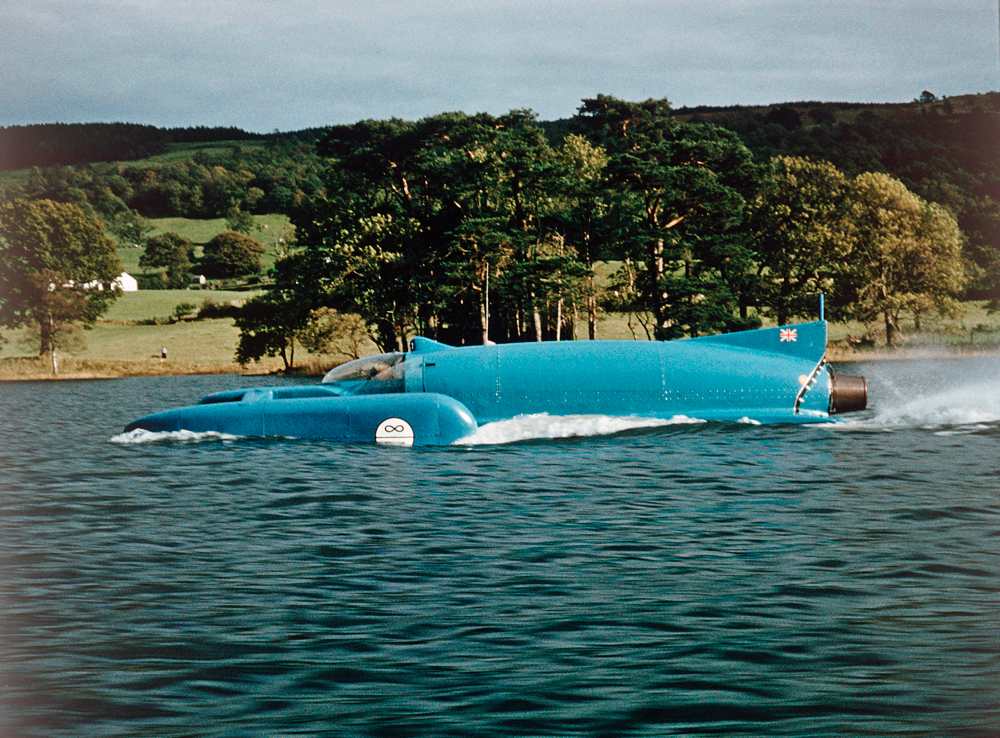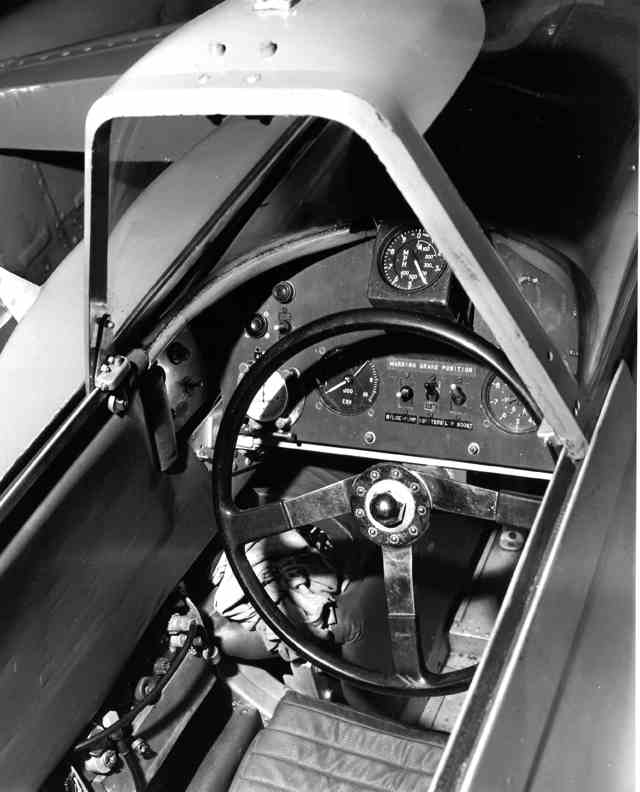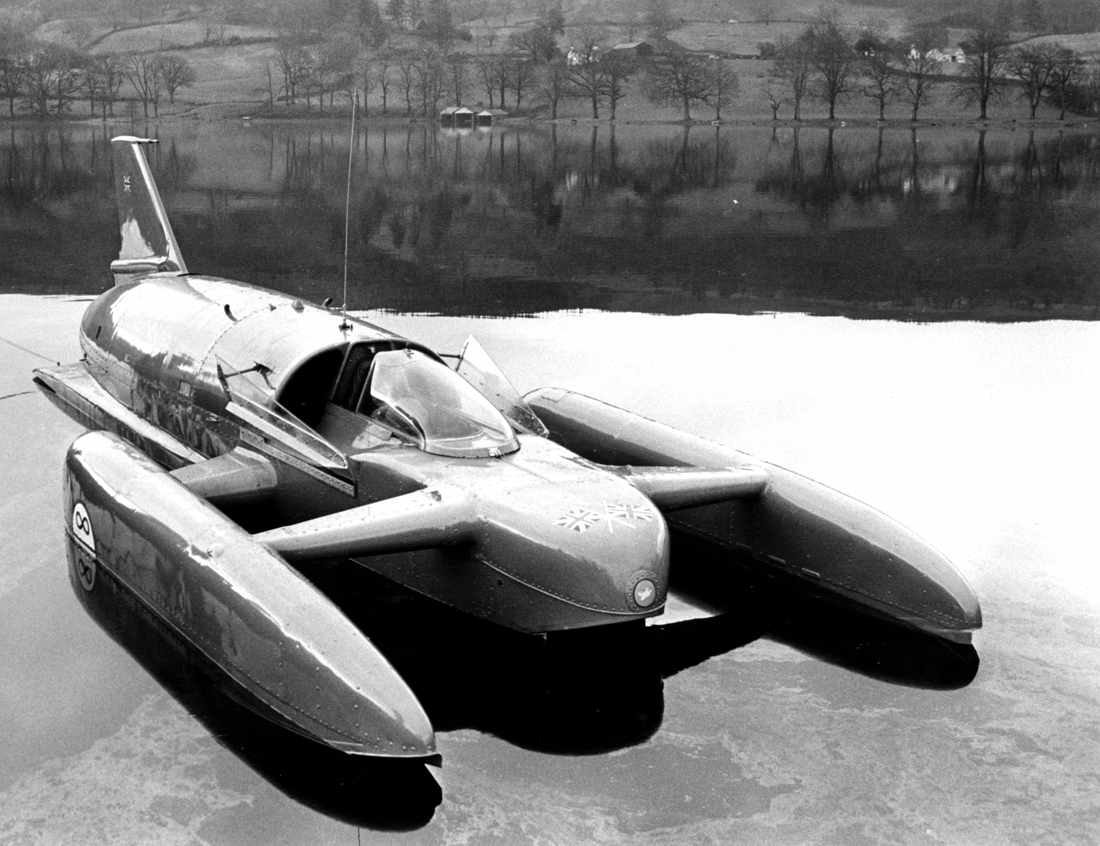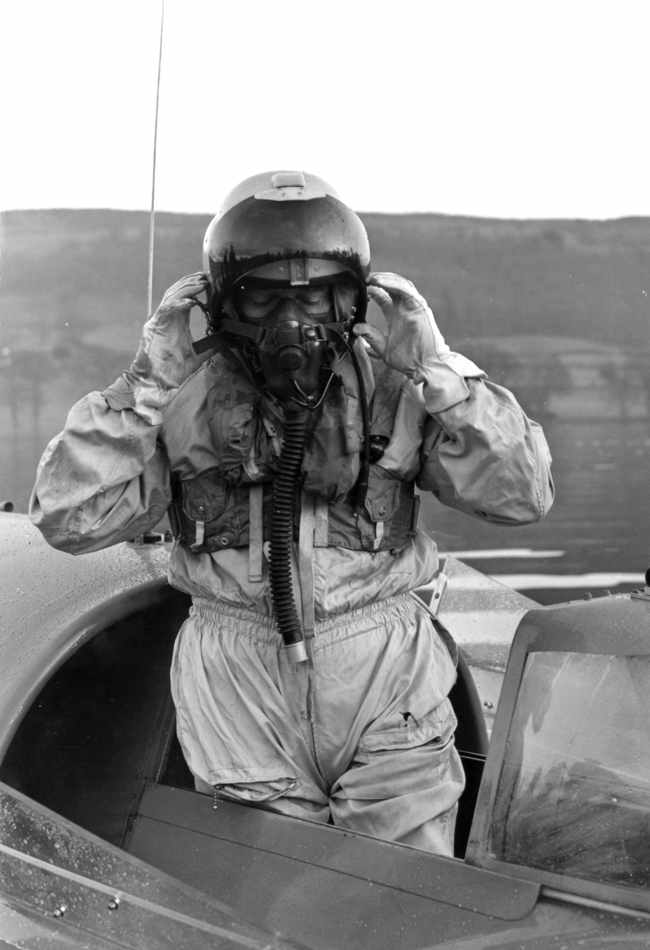Donald M Campbell CBE ‐ Bluebird K7

Bluebird K7 during her record breaking (Photo courtesy of David de Lara)
Outright Water Speed Records of Bluebird K7:
202.32 mph ‐ July 1955 Ullswater England
216.23 mph ‐ November 1955 Lake Mead, Nevada USA
225.63 mph ‐ September 1956 Coniston Water England
239.07 mph ‐ November 1957 Coniston Water England
248.62 mph ‐ September 1958 Coniston Water England
260.35 mph ‐ May 1959 Coniston Water England
276.33 mph ‐ December 1964 Lake Dumbleyung Western Australia
“…..all of us can look back on incidents which send blood coursing through our veins and accelerates the heartbeat….the man who runs unnecessary risks is a fool to himself, but sometimes a split second of time can be gained at the cost of a chance and there is not a man among the mile-eaters who would not willingly and gladly take that risk.” – Malcolm Campbell
Detailed design of Donald Campbell’s Bluebird K7 started in January 1954 and she was officially handed over to him 26th November 1954. The hydroplane had cost £25,000, without counting the two Metro Vick ‘Beryl’ engines, sundry materials and labour, all provided free of charge; however about £10,000 had been financed by Donald himself.

Bluebird K7 cockpit final configuration – (courtesy of Paul Allonby)
Following Cobb’s tragic accident, to get some idea of the conditions likely to be met by the new Bluebird at high speed, investigations were carried out on the last eight seconds of Crusader’s final run. It was evident to the designers Lewis and Kenneth Norris that special precautions would be required for the new Bluebird to survive under such conditions. General rigidity was essential; any torsion of the structure could affect the rudder due to increased control circuit stiffness and result in an unacceptable change of incidence to the planing surfaces. The Bluebird K7 hydroplane was the first all‐metal jet‐powered boat to be built, combining light weight and unprecedented strength. The engine was a surplus Metropolitan Vickers ‘Beryl’ turbo jet engine developing 4,000 lbs. thrust.
The whole assembly was stress carrying; the main frame carried the direct vertical acceleration, deceleration and skid loads. The resulting torsional loads were carried by the skin and sub‐structure. The three planing shoes were machined from solid light alloy billets and bolted to the bottom of each float and to the stern in the centre of the main hull. The underside of the central hull was built of reinforced corrugated metals and held together with over 10,000 rivets.

Bluebird K7 in her final configuration – (courtesy of Paul Allonby)
Donald’s main controls were, the steering wheel, high and low pressure fuel cut‐off levers, foot and hand‐operated throttles. The instruments were an air speed indicator, revolution counter, fuel pressure gauge, jet pipe temperature gauge and G meter with a maximum hand.
Leo Villa, Campbell’s chief engineer, recalls Donald’s 1st record of 200.32 mph
‘Finally the record day came, the weather wasn’t particularly bad, Donald wasn’t feeling too well, he had a terrible backache. The timekeepers were all in place and I took up my position in the middle of the lake with my son Tim, who was piloting my boat. In the early days we never had a skin diver or a doctor with us which we had on some of the later attempts and if anything had gone wrong we would have been in plenty of trouble. Donald got going and did a marvellous run down. We had trouble with the RT and we couldn’t tell what in the hell he was saying and finally lost contact with him. He made his return run and the final result was that he became the first man to exceed 200 mph on water! Donald said afterwards that it was one hell of a run…..he had had his insides shaken out…

Donald Campbell in full cockpit regalia within Bluebird K7 (photo courtesy of Paul Allonby)
It was one of the most extraordinary moments of my life. After he had broken the record Don in Bluebird was idly making his way back towards to the boathouse and I was chasing him up in the old tender boat. By the time I had got alongside Donald had cut the engine and he shouted ‘Come on board Leo.’ I clambered up and gave him a hug and said ‘Bloody fine show Don!’ After all the strain we had been through we both broke down and cried like a couple of kids with the emotion of it. We had worked so hard for six years to get that damned bloody record and all of a sudden we’d finally got it!’
The Beryl jet engine with which Bluebird K7 was designed around and achieved all her records with, was changed for a more powerful Orpheus jet engine in 1966 in the hope of bettering the existing record set by Campbell. On 4th January 1967, on Coniston Water, England, Bluebird K7 became unstable attempting the 300mph record and crashed. Donald Campbell was killed.
